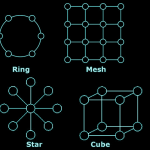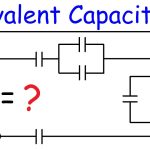Electrostatic field
Figure 6.1 represents two parallel metal plates, A and B, charged to different potentials. If an electron that has a negative charge is placed between the plates, a force will act on the electron tending to push it away from the negative plate B towards the positive plate, A. Similarly, a positive charge would be acted on by a force tending to move it toward the negative plate. Any region such as that shown between the plates in Figure 1, in which an electric charge experiences a force, is called an electrostatic field. The direction of the field is defined as that of the force acting on a positive charge placed in the field. In Figure 6.1, the direction of the force is from the positive plate to the negative plate.

Such a field may be represented in magnitude and direction by lines of electric force drawn between the charged surfaces. The closeness of the lines is an indication of the field strength. Whenever a p.d. is established between two points, an electric field will always exist. Figure 6.2(a) shows a typical field pattern for an isolated point charge, and Figure 6.2(b) shows the field pattern for adjacent charges of opposite polarity. Electric lines of force (often called electric flux lines) are continuous and start and finish on point charges. Also, the lines cannot cross each other. When a charged body is placed close to an uncharged body, an induced charge of opposite sign appears on the surface of the uncharged body. This is because lines of force from the charged body terminate on its surface.

The concept of field lines or lines of force is used to illustrate the properties of an electric field. However, it should be remembered that they are only aids to the imagination.
The force of attraction or repulsion between two electrically charged bodies is proportional to the magnitude of their charges and inversely proportional to the square of the distance separating them,

Electric field strength
Figure 6.3 shows two parallel conducting plates separated from each other by air. They are connected to opposite terminals of a battery of voltage V volts. There is therefore an electric field in the space between the plates. If the plates are close together, the electric lines of force will be straight and parallel and equally spaced, except near the edge where fringing will occur (see Figure 6.1). Over the area in which there is negligible fringing,




